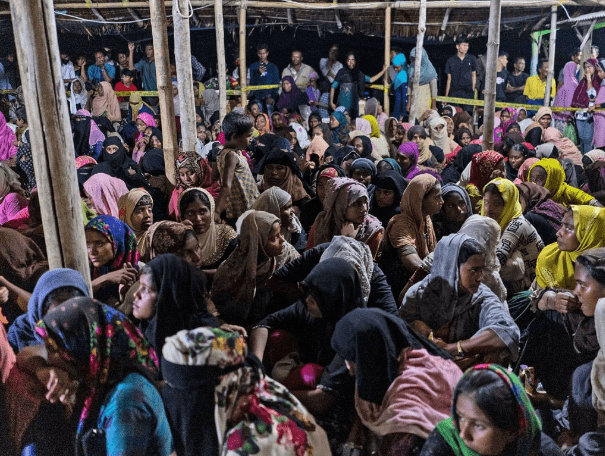Nearly 300 Rohingya migrants reached Indonesia early Monday claiming to have been at sea for seven months, United Nations officials said, in one of the biggest landings by the persecuted Myanmar minority in years.
The migrants — including more than a dozen children — were spotted at sea on a wooden boat by locals who helped them land near Lhokseumawe city on Sumatra’s northern coast, officials said.
“From their testimonies, they said that they were seven months adrift,” said UN refugee agency coordinator Oktina, who like many Indonesians goes by one name.
“We have seen their condition is very weak at the moment,” she added.
Chris Lewa, director of the Arakan Project — an NGO that focuses on the Rohingya crisis — said the migrants may have been held at sea while traffickers extorted money from their families.
“These people were actually kept hostage,” she said.
“They (the traffickers) said they wouldn’t disembark until we’re paid.”
But she admitted “we don’t really know the full story yet”.
At least one member of the group — which included 102 men, 181 women and 14 children — was ill and had to be rushed to a local hospital for treatment, said the area’s military chief Roni Mahendra.
Images from Lhokseumawe showed migrants sitting on the ground in a makeshift building with their meagre possessions.
Locals had donated food and clothing.
“We’re concerned about their condition,” said Lhokseumawe resident Aisyah.
“They need help in the name of humanity… They’re human beings like us.”
The landing comes after about 100 Rohingya, mostly women and children, arrived in the same area in June following what they described as a perilous four-month journey that saw them beaten by traffickers and forced to drink their own urine to stay alive.
Both groups that came ashore in June — and the latest arrivals — may have been part of an estimated 800 Rohingya who reportedly left southern Bangladesh earlier this year, Lewa said.
About 30 migrants in the original group were believed to have died at sea, she added.
Around a million Muslim Rohingya live in cramped and squalid refugee camps in Bangladesh — next to their native Myanmar — where human traffickers run lucrative operations promising to find them sanctuary abroad.
Muslim-majority Indonesia and neighbouring Malaysia are favoured destinations.
Hundreds of Rohingya had set sail in early April, but were pushed back by Malaysian and Thai authorities in the midst of the coronavirus pandemic, Lewa said.
“This is the biggest (arrival) we have seen since 2015,” Lewa said.
“The big question is whether all of them have now come ashore or if any are still at sea,” she added, referring to the original 800 refugees.
Source: AFP
